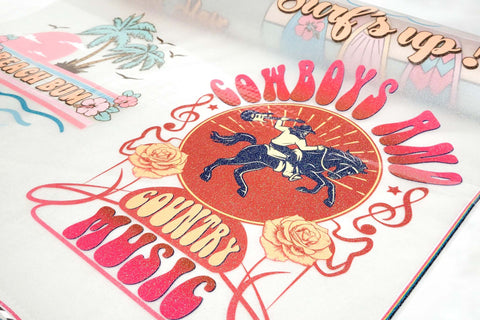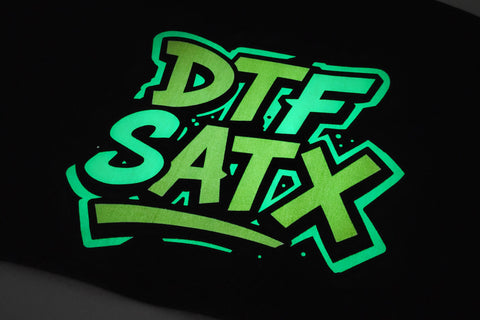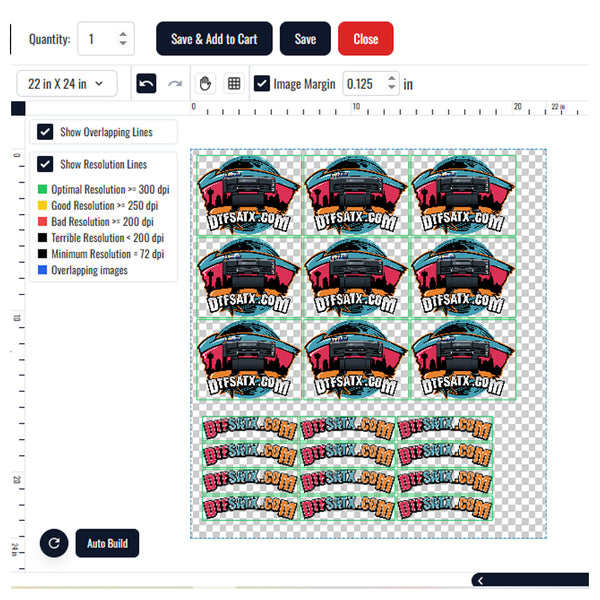Searching for how to store your DTF transfers properly? The tip is to keep the film flat, cool, dry, and keep it in airtight bags, silica gel packets, and properly labeled. However, learning the detailed steps behind proper storage ensures your DTF transfers remain vibrant, press-ready, and long-lasting. So, here you go!
What Are DTF Transfers and Why Is Proper Storage Important?
DTF Direct-to-Film transfer is a PET film that contains your design by using specialized ink and powder adhesive. DTF is different from DTG and other reprinting methods. These transfers can stay the same for months only if you store them correctly.
Improper storage conditions, such as being exposed to heat, humidity, or light, can break down the bond, damage the ink, and waste the film. By understanding the right storage methods, you can maintain the quality of your DTF prints.
Best Equipment & Storage Solutions for DTF Transfers
The following materials prevent sticking, moisture absorption, and contamination if you store DTF transfers properly:
-
Airtight plastic bins or resealable storage bags
-
Flat file cabinets for commercial use
-
Silica gel packets to reduce humidity
-
Parchment or butcher paper between layers
Step-by-Step Guide- How to Store DTF Transfers at Home or in a Shop
Here is a step-by-step process for keeping your DTF PET film in perfect condition for later use:
Step#1: Let Transfers Cool Before Packing
After printing and curing your DTF transfers, cool them completely for 15 to 30 minutes before storage. If you pack them warm, the residual heat can cause condensation inside the bag or container, which may result in moisture damage or premature adhesive activation.
Step#2: Use Parchment Paper to Separate Sheets
Now is the time to use parchment paper between each sheet to prevent sticking together. It also protects the printed side from scratching, smudging, or accidental contact with other adhesives.
Step#3: Place in Ziplock Bags with Silica Packets
Store each batch of transfers in resealable ziplock bags to create a barrier against air and moisture. Add one or two silica gel packets per bag to absorb any humidity that may get in. Silica gel can stop moisture build-up, which can ruin the transfer’s adhesive layer. See the uses of silica gel.
Step#4: Expel Air Before Sealing
Before sealing the ziplock bag, press out as much air as possible. This helps in reducing oxygen exposure, which can degrade ink and adhesive, and prevents moisture from circulating inside the bag.
Step#5: Lay Flat in Airtight Containers or Drawers
Never roll, fold, or lean DTF transfers; otherwise, you will never get the perfect DTF printing quality. Instead, lay them flat in plastic bins, file drawers, or flat storage boxes that seal tightly. This protects them from dust, light, and physical damage.
Step#6: Store in a Temperature-Controlled Room
Choose a cool, dark space like a storage closet, cabinet, or dedicated drawer that is away from direct sunlight, heating vents, or damp walls. The ideal temperature is 65–70°F (18–21°C), and humidity should be less than 50%. Extreme environments (hot, cold, or humid) will degrade your transfers over time.
Step#7: Inspect Monthly for Moisture or Damage
Make it a habit to check your stored transfers once a month. Look for:
-
Foggy or damp bags
-
Stuck or curled sheets
-
Discoloration or fading
Short-Term vs. Long-Term DTF Transfer Storage: What’s the Difference?
Short-Term (0–30 days)
For short-term DTf storage, place the printed PET film in sealed bags with minimal silica and avoid sun exposure and stacking
Long-Term (30–365+ days)
If you want to store DTF transfer for a long time, use airtight bins, extra silica, and paper interleaving. Plus, keep in a cool, dark storage area away from printers or heat sources.
Ideal Temperature and Humidity to Store DTF Transfers
The ideal temperature to store DTF transfer film is 65°F to 70°F (18°C to 21°C), and the humidity level should be below 50%. You need to avoid storing them in attics, basements, garages, or rooms near windows where conditions fluctuate. Too much moisture can cause bubbling, while heat can prematurely activate the adhesive.
Most Common DTF Transfer Storage Mistakes
The following are the errors you need to avoid while storing DTF transfer to extend its lifespan:
-
If you leave it in sunlight or heat, it can activate the glue and fade the ink.
-
Skip silica gel packets, and you expose your transfers to moisture damage.
-
Stack transfers too high, and you risk curling or them sticking together.
-
Forget to label them, and you might end up using expired or degraded designs.
Final Thoughts
By storing your DTF transfers perfectly, you can save time and money. You just need the right equipment or tools, and you can preserve the quality and usability of every DTF transfer. I hope this guide helps you next time to get the press-ready DTF transfers.
FAQs
Can you store DTF transfers in a binder or folder?
Yes, storing transfers in binders with plastic sleeves or artist portfolios is a good solution for small quantities. Just make sure the sleeves are acid-free, and keep the binder in a cool, dark place with occasional silica packets.
How do I know if my DTF transfers are no longer usable?
Check for any signs of adhesive degradation, warping, discolored ink, or loss of vibrancy. If there are any of these signs, test on a spare garment before using it on a client order.
How to organize and label DTF transfers for easy use?
If you want to organize and label DTF transfers, group them by design type, size, or project in resealable bags or folders. Use clear labels with the design name, print date, and a recommended “use by” date to keep track of shelf life. Store them flat in labeled bins or drawers, so you can quickly find and access what you need without damaging the prints.













